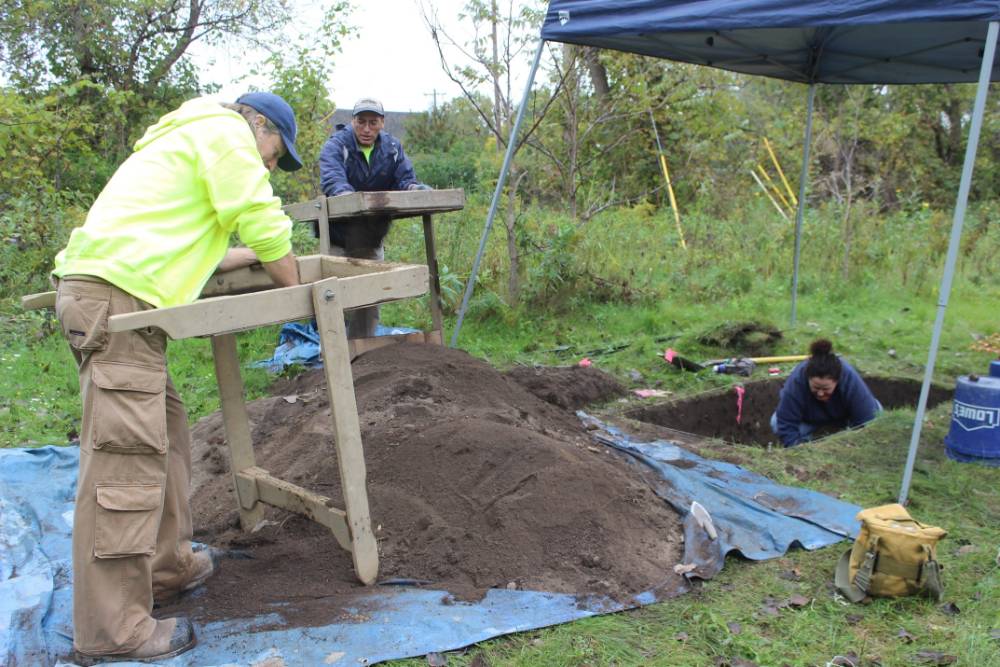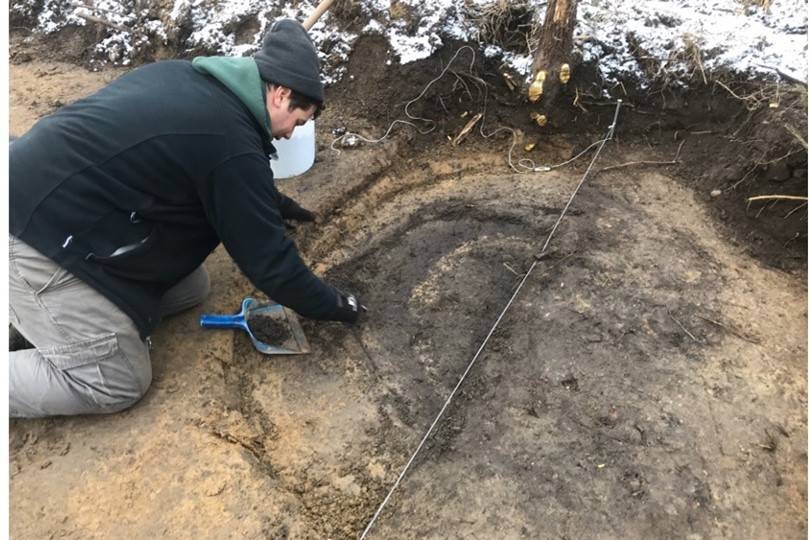The Phase 3 fieldwork was two pronged. First, we excavated 1 x 1 m (3.3 x 3.3 ft) test units across the site for a total of 75 m² (807 ft2). The units were carefully excavated by hand to identify the different soil layers that illustrate the physical history of the site and to recover a representative sample of material culture, such as tools, pottery, and animal bones. The units were located in areas that had previously yielded a lot of material culture and/or features (i.e., non-portable material culture like hearths), with additional units placed outside these identified zones to ensure that we had a full picture of the activities that took place at the site. Unit excavation also helped us understand how the site’s original topography had been affected by earlier road and bridge construction.

Archaeologists using screens to recover material culture from a test unit.
When the units were completed, we used backhoes supplied by the DOT to carefully remove topsoil from selected areas across the site. Beneath the topsoil, features, including hearths, storage pits, post molds, and smudge pits, were starkly visible against the bright yellow sandy B horizon subsoil. Over 100 features were identified. Features were drawn to scale and photographed, and were excavated by first removing half to document their profiles. Soil samples from the second halves were saved for water-flotation in our lab. This procedure allows us to recover tiny seeds (e.g., corn, beans, raspberries, strawberries), nutshell fragments, beads, and other minute material culture that would have fallen through our field screens. Radiometric dates to help establish the site’s chronology were acquired from charred corn kernels and nutshell fragments that were preserved within these features.

Archaeologist starting to bisect a hearth feature after mechanical soil removal.